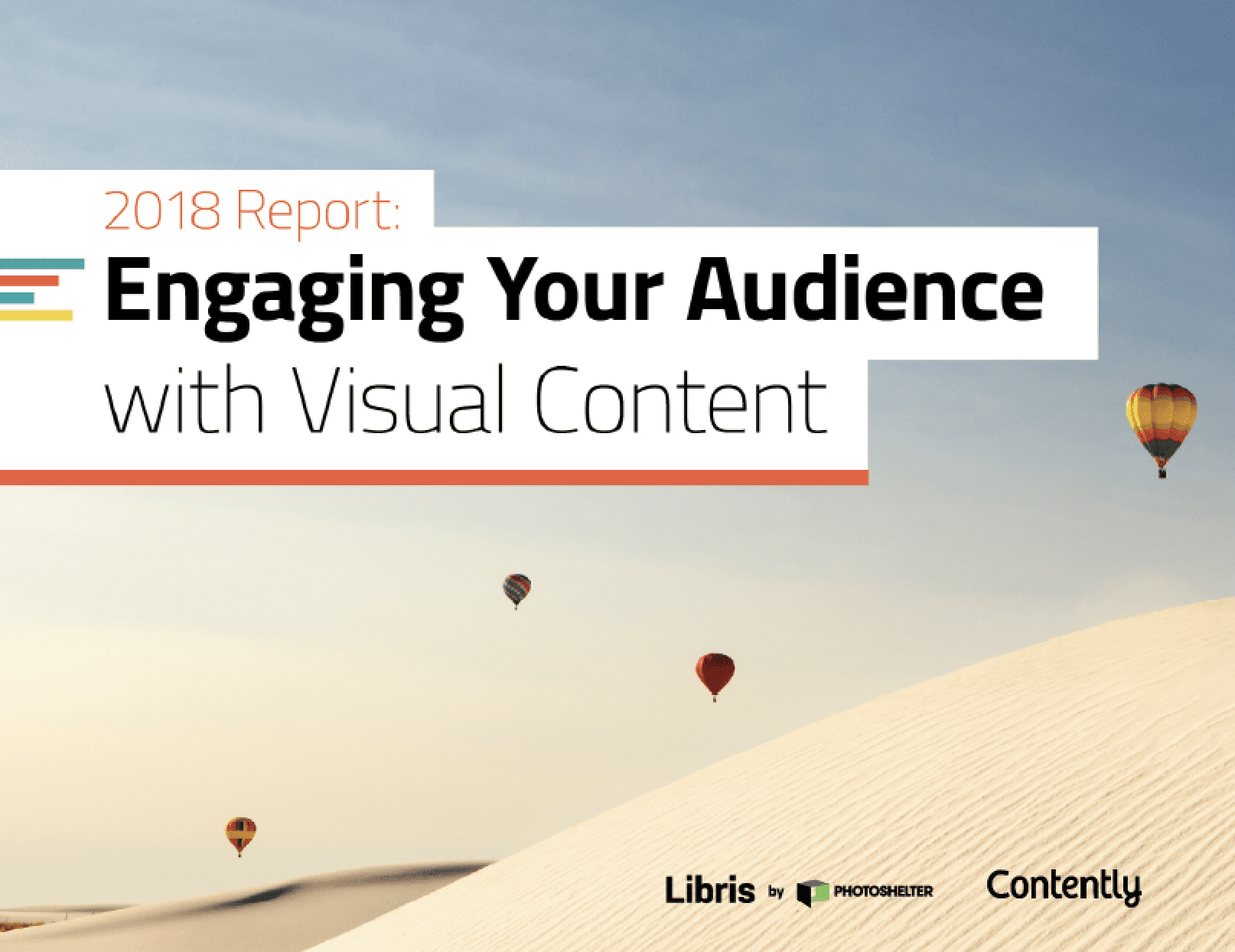I assume very few hours of your day go by without feasting your eyes on images, videos, infographics, slides and various forms of visual content.
I also assume the social media posts, articles, and every digital doodad you find striking almost always offer some degree of eye candy.
So… Assuming you’re good with my assumptions, I’m now going to assume you’ll find the following of interest:
- Research revealing how creatives and marketing professionals manage their visual content.
- Real-world insights from three experts that place pixels on pages daily.
This post offers insights both courtesy of Libris by Photoshelter and Contently who put together the report Engaging Your Audience with Visual Content and a special “visual storytelling insights” panel discussion featuring Dustin Drankoski of Mashable, Megan Morreale of Taboola, and Samantha Stamler of Great Big Story.
How to Create Genuine Native Content
Does this stuff work?
The answers to this first question—and all the questions—come from an online survey of 564 marketing and creative professionals done in March 2018.
What kind of results do you get when using visual assets in digital marketing?
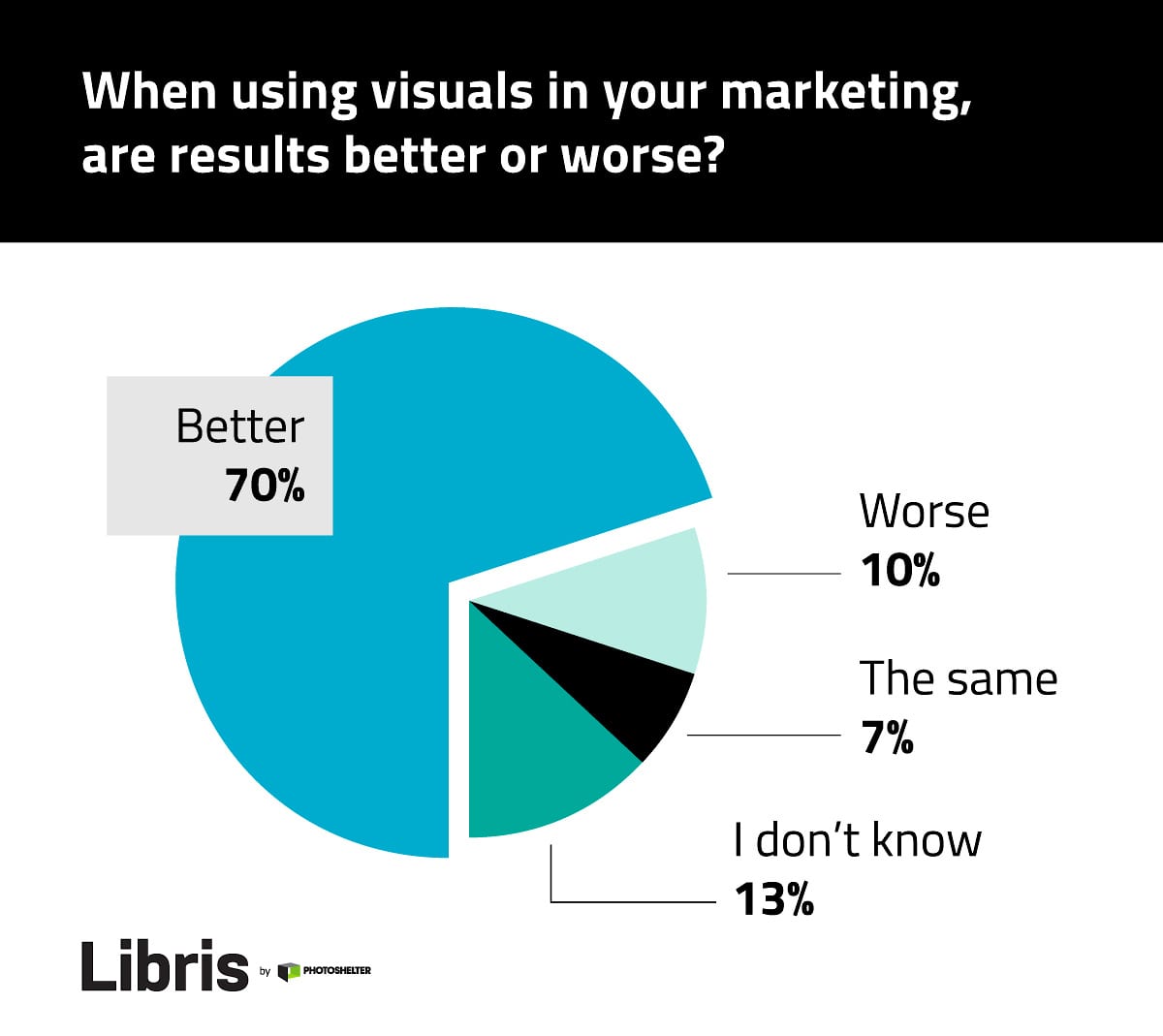
It’s unsurprising, but encouraging to know 70% get better results when using visual assets. I imagine the 10% getting worse results are doing something wrong.
Here are some findings indicating a rising appetite for publishing visual content:
- 63% claimed their need for photography increased compared to last year.
- 70% of those who said their need for photography has increased use visual content daily or more often.
- 69% claimed their need for videography increased compared to last year.
How often does your organization use visual content to engage with your audience online?
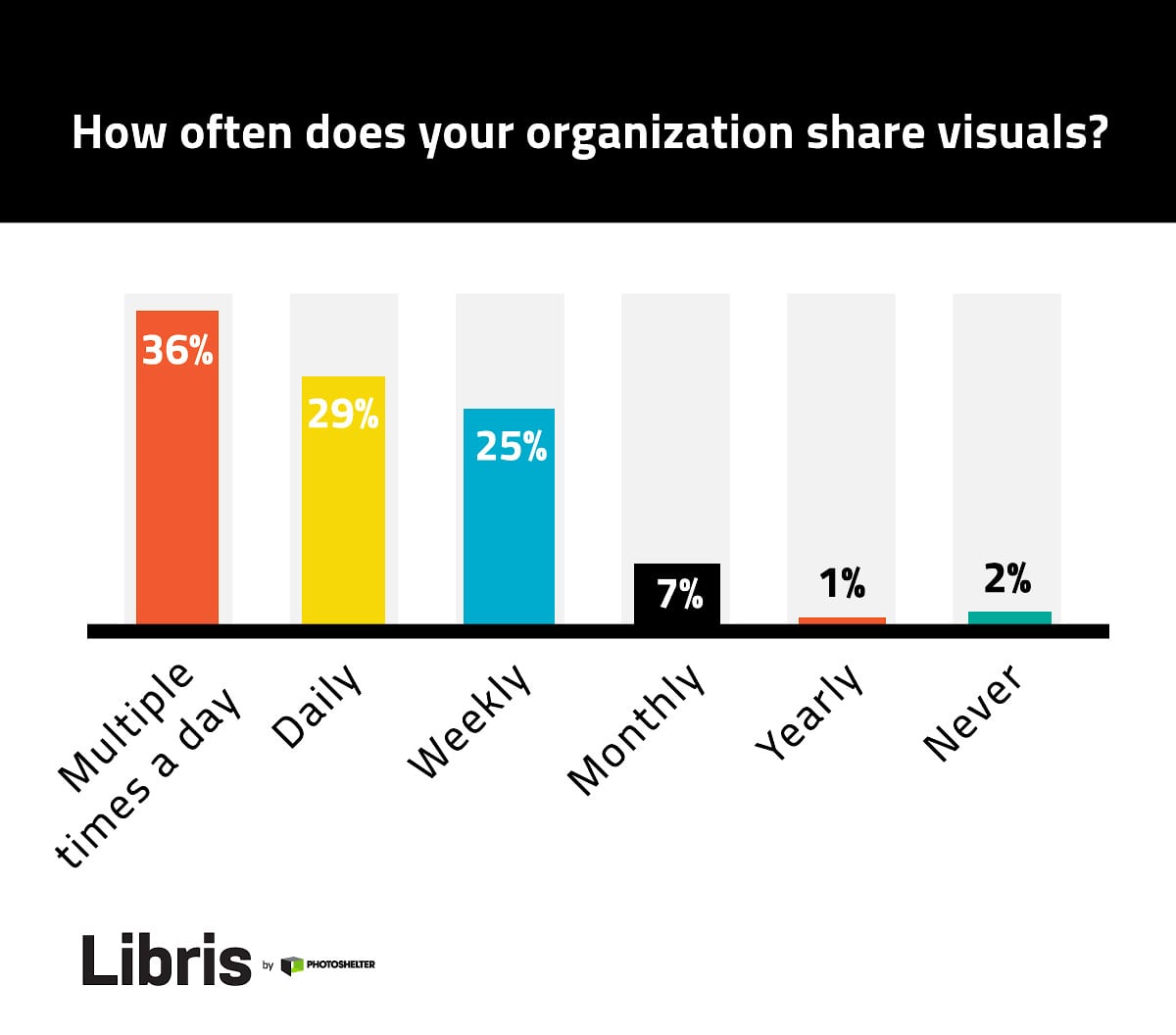
In Social Media Examiner’s 2017 Social Media Marketing Industry Report, 41% claim visuals are the most important type of content, beating out blogging at 32%. Their report also found that video is the content type marketers most want to learn about.
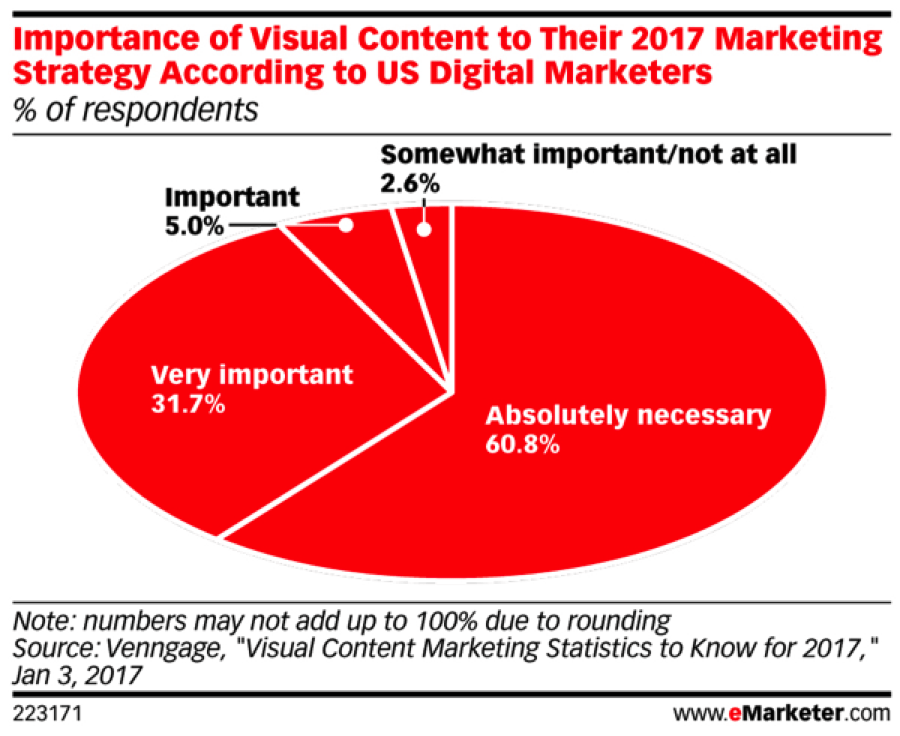
eMarketer presents data from Venngage that makes an overwhelming case for the importance of visual content.
Where’d it come from and where’s it go?
What is your organization’s method for sourcing photography or videography?
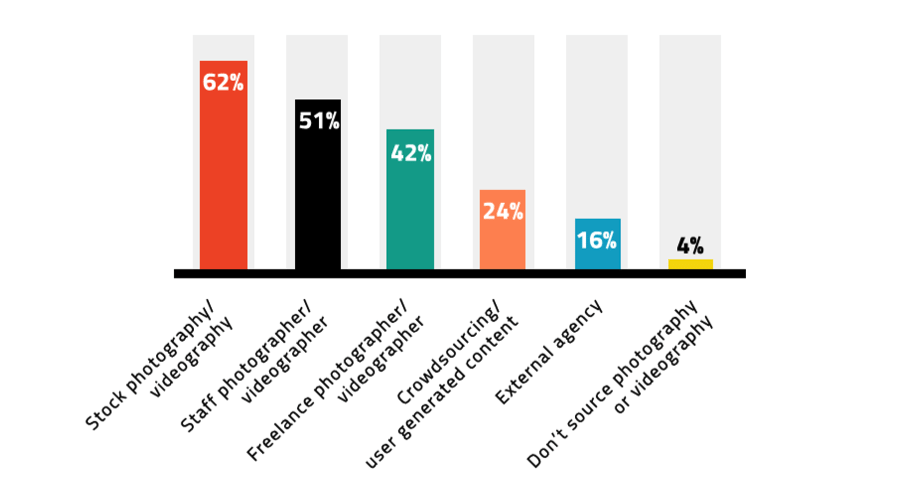
Though purchasing video assets from stock remains the top way organizations source content, a good mix of sources were cited.
What is your main use case for photos and videos?
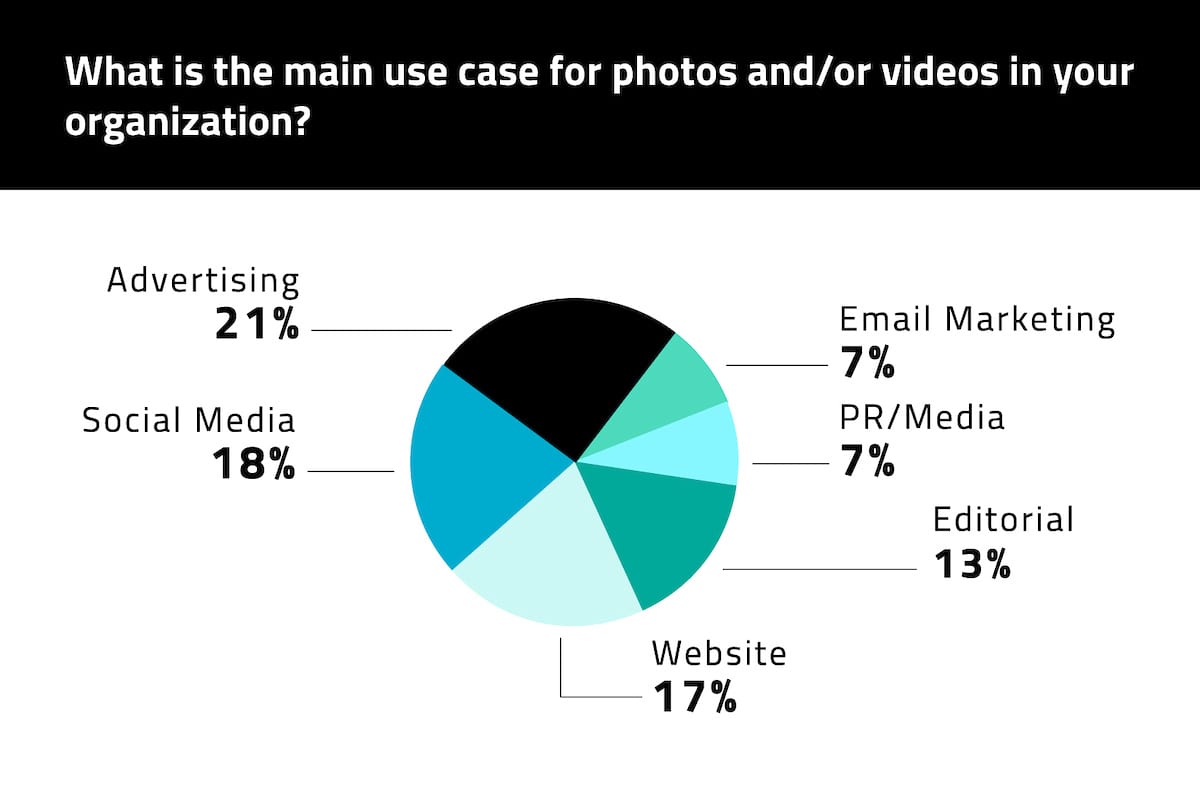
Note the phrase “main use” in the survey question above. Participants were asked to select only one answer.
Which digital marketing channel does the best job engaging your audience?
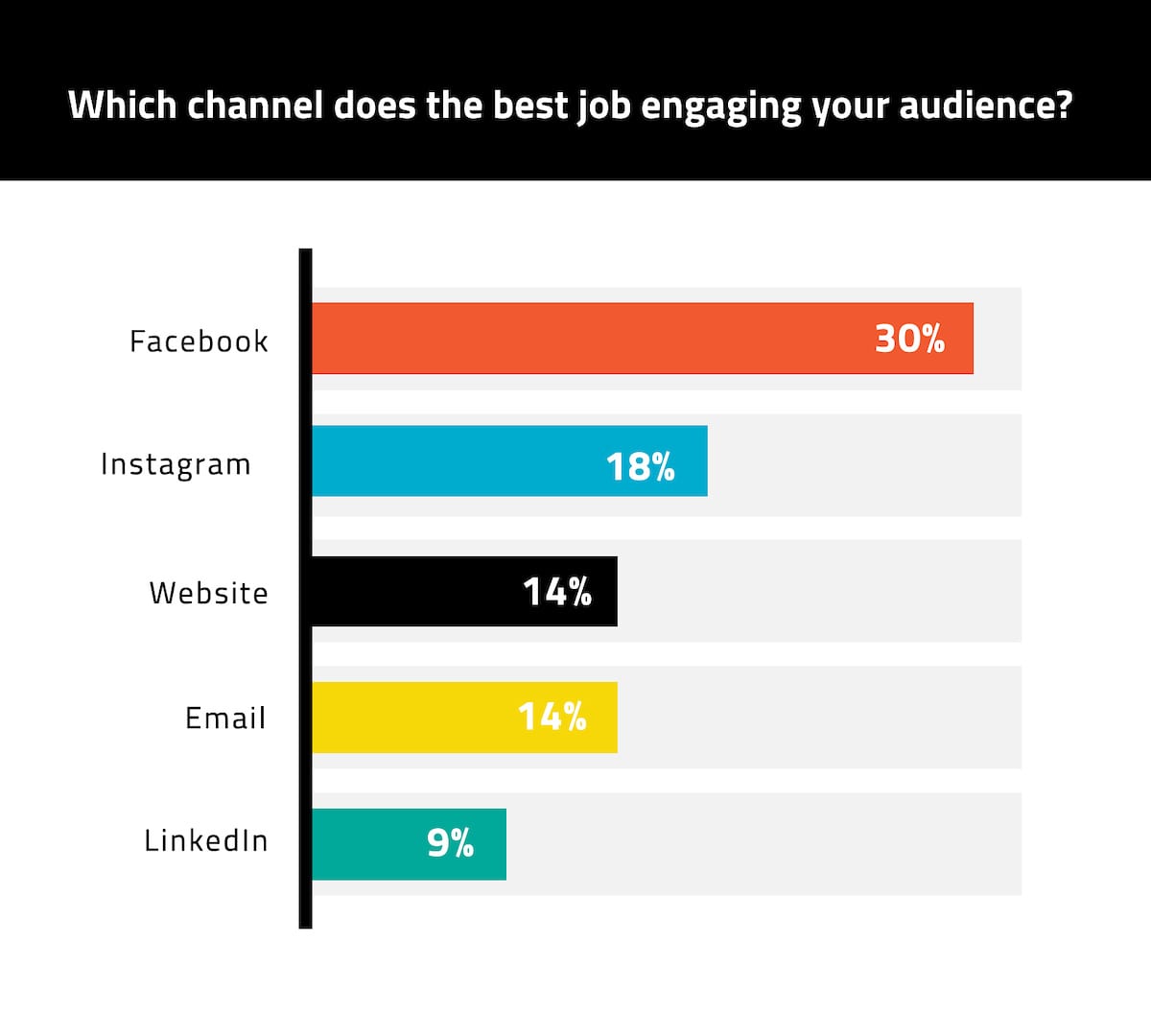
The authors of the report added a note saying 100% of the people in the Facebook camp always include a visual asset in their posts. Across the board, 75% said they always include a visual asset.
Popular visual content formats
What visual content formats will you take advantage of this year?
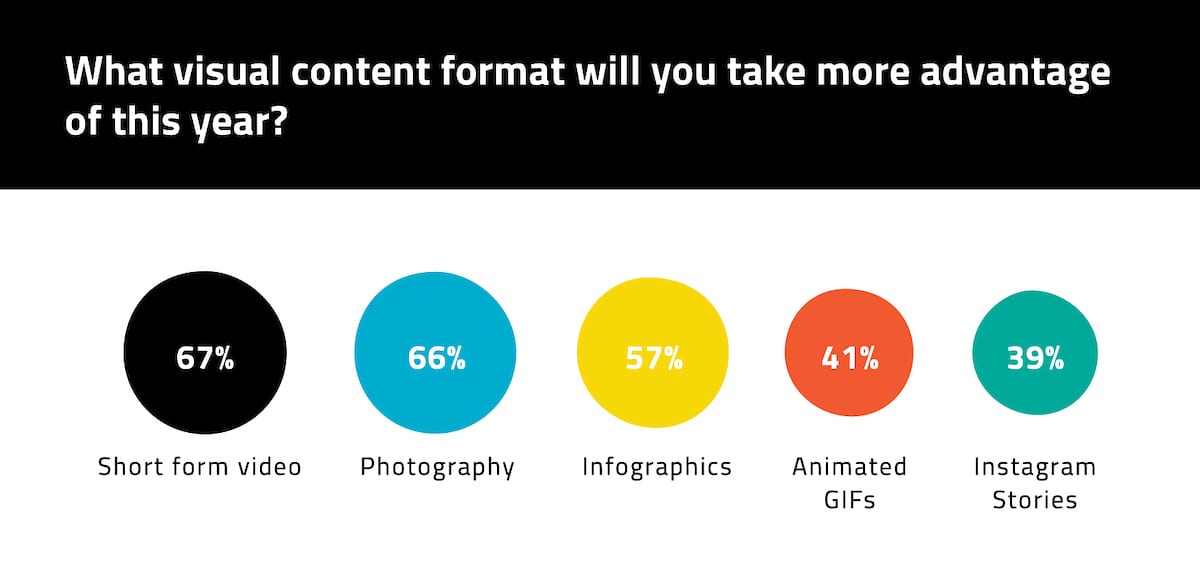
Yes indeed, video has arrived, and it’s our winner for engagement…
What type drives the most engagement?
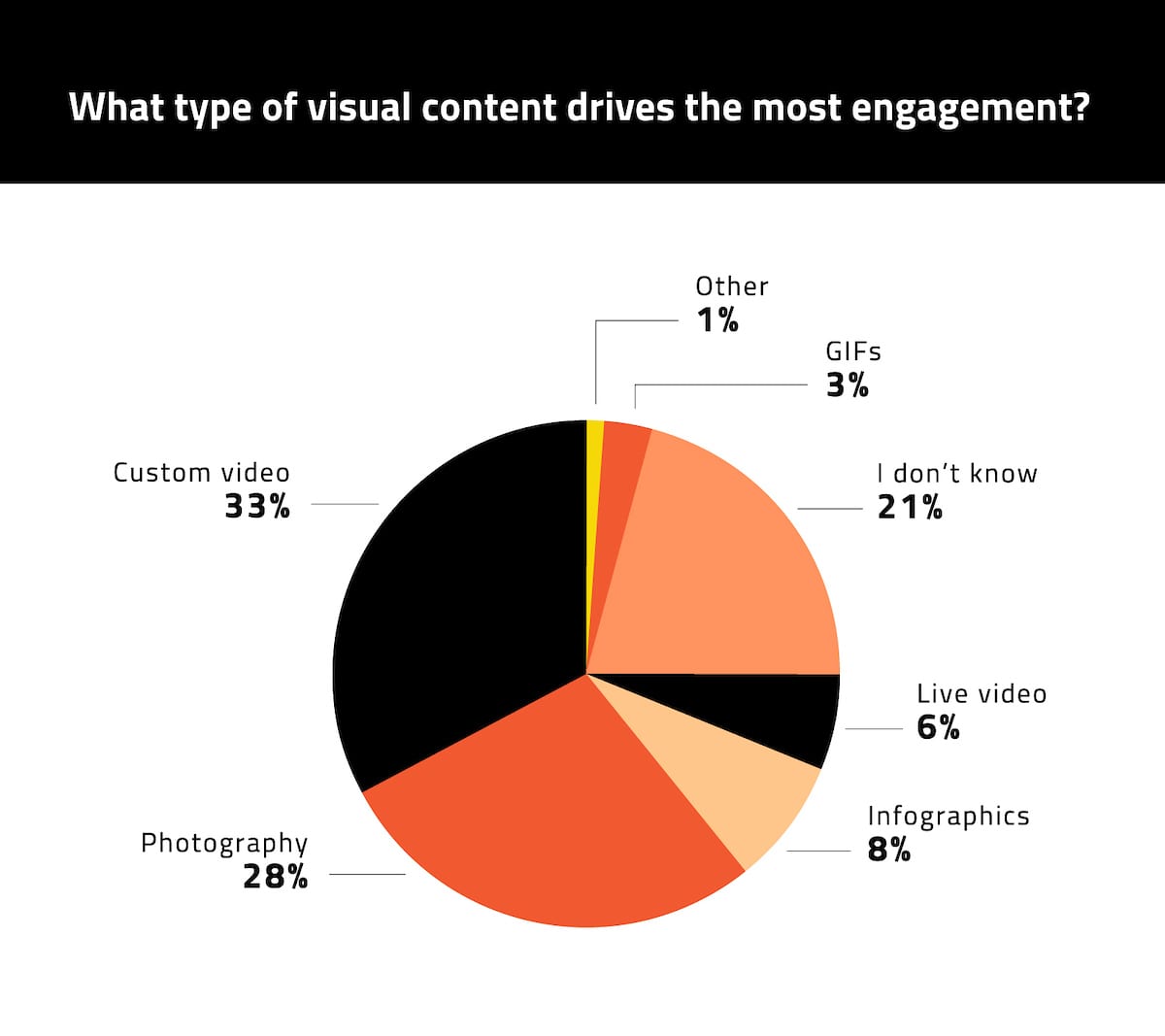
For more insights on video content, I grabbed some stats from a post on the Jeff Bullas blog.
- By 2019, video is expected to represent over 80% of all Internet traffic.
- Customers are 64% more likely to buy a product after watching a video
Of course, you can’t assume every brand has the same experience with visual content formats. Case in point, when the experts panel discussed what works best for their companies, Taboola’s Megan Morreale answered:
“Data visualization works best, hands down. Another thing that works effectively for us is showing data that’s unique. These types of graphs, when shared directly on our distribution channels, get a lot of engagement, a lot of likes, they create a lot of conversation and buzz.”
What type of visual content is hardest to produce?
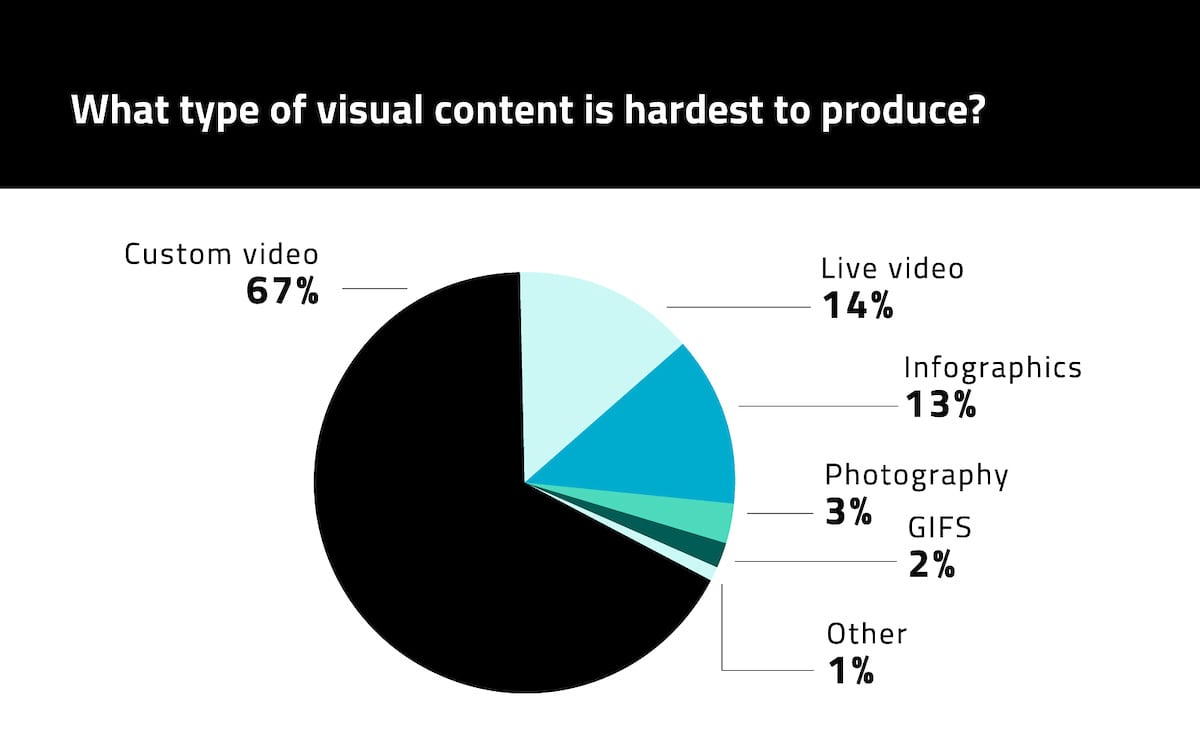
Video wins in a landslide.
For many brands, video may be hard to produce, however Great Big Story’s Samantha Stamler makes the case that the right team can create quality content without busting the budget…
“Producing content at a high bar is imperative. It’s part of our voice and brand. What works for us is our team. We have an incredible team of 15 producers. We aren’t outsourcing. Our producers are jacks-of-all-trades. They’re able to put together videos that hit our bar. We haven’t found that you need a big budget in order to create quality video.”
How do you kickoff a great visual content project?
This question wasn’t asked of the survey respondents, but was posed to the members of the panel, who had different—and interesting—answers.
“The first step is usually based on how big do we want to make it and how do we unify the content? We look at how do we make it so that all the visual content feels special and unique to that campaign.” ~ Dustin Drankoski, Mashable
“We start with our goals and KPIs. Ideas will come from a million different angles… the sales team, field marketers. Sometimes we’re inspired on our own simply from being content consumers. The next most important step for us is research. We want to know what’s already out there and whether or not it’ll be worth it for us. If there’s something out there already in terms of the topic we ask ourselves, can we add something new to the conversation or make something better?” ~ Megan Morreale, Taboola
“Our starting point is always the idea. We have daily pitch meetings and everyone’s pitching all the time. The bar for our pitches is incredibly high. We have producers that have been with us from the beginning and their pitches get rejected all the time. Is it a good story? That’s the starting point.” ~ Samantha Stamler, Great Big Story.
How do you gauge success?
Another interesting area the panel got into was performance measurement. When asked, “What matters most about the KPIs?” and “What’s a successful effort?” the panelists answered:
“We have a lot of projects focused on the idea of time spent. To us, time spent means people thought it was worth engaging with. We also use clicks, uniques, number of views, and where a video got views.” ~ Dustin Drankoski, Mashable
“We’re looking to get subscribers to our blog. We’re looking for people that came to a landing page. In terms of branding, we’re looking for things like social media engagement, completed video views, shares. We’re looking for coverage, especially when it comes to data. We’re looking for that buzz. We want to see if people are talking about what we put out there.” ~ Megan Morreale, Taboola
“The things that matter most to us are engagement and total time spent. Knowing that someone’s made it through a video, or most of it, feels better to us. That social engagement—the likes, shares and reposts—resonates more with us.” ~ Samantha Stamler, Great Big Story.
Who do you love?
The panel fielded one last question, a fun one: What brands are killing it with visual storytelling?
“I fricken’ love IKEA. I think everything they do from print, VR and AR on phones, to short video campaigns, and how they do things trying out technology and small little popups. All that’s genius.” ~ Dustin Drankoski, Mashable
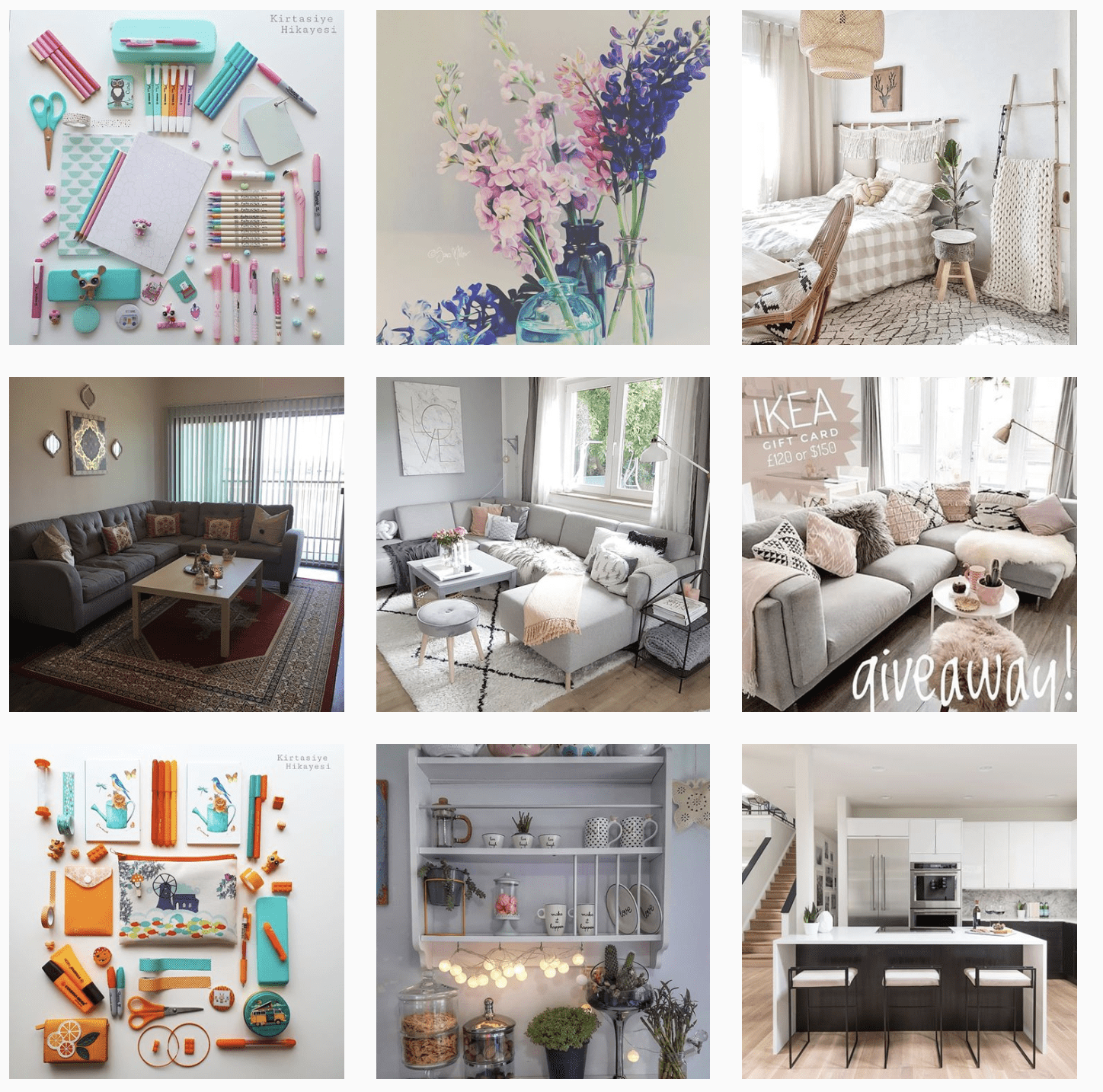
Above: 9 recent posts top off the company’s nearly 8-million Instagram posts. Yeah, they’re visual thinkers.
“MailChimp. Help Scout. Mashable. They do illustration well and keep it on brand.” ~ Megan Morreale, Taboola
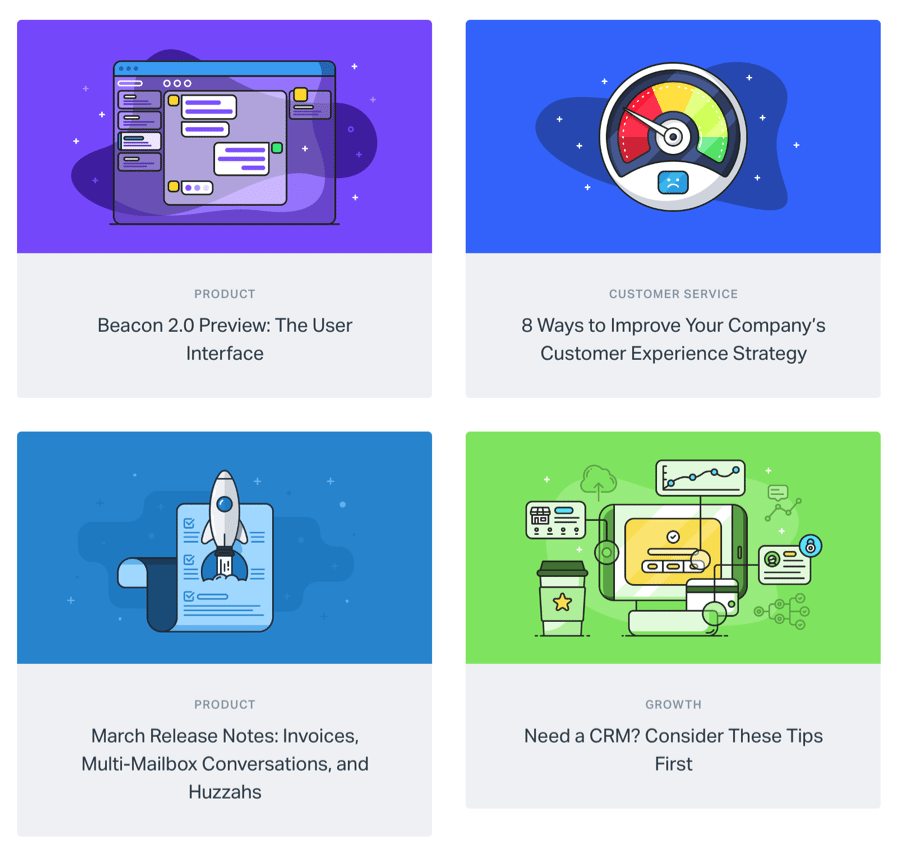
As Megan points out, Help Scout has created a visual identity for their blog featuring illustrations that are indeed “on brand.”
“I’ve seen some incredible things come out of Patagonia and North Face. North Face did an incredible thing recently with a skier who traversed through town.” ~ Samantha Stamler, Great Big Story.
Samantha was referring to this wildly creative video called Imagination.
Finally the host of the session, Andrew Fingerman, CEO of Photoshelter chimed in with his answer: Yeti.
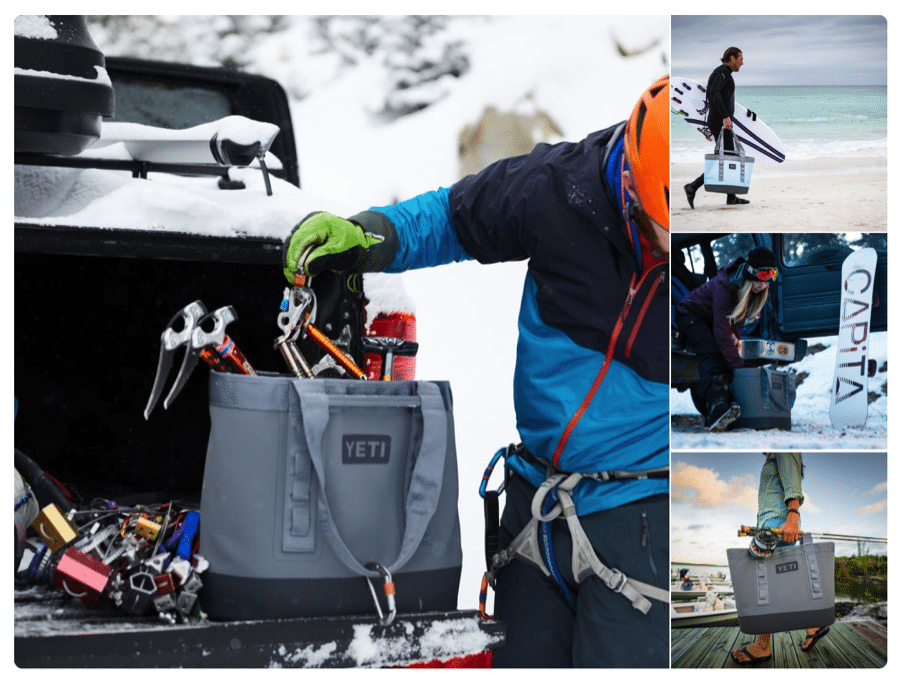
He said they do engaging short videos and unbelievable vignettes. I checked into their Twitter feed and must agree. Here’s a company that knows how to tell a visual story.
Watch the entire panel discussion here.
Download the Libris report here.
And capture and distribute compelling visual content here, there and everywhere your brand publishes.
